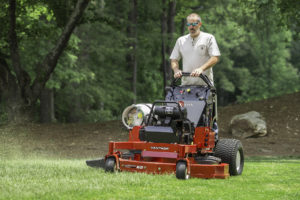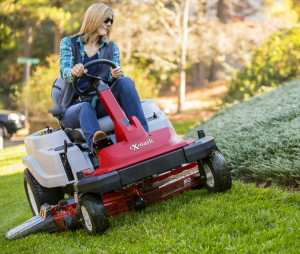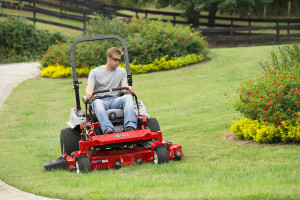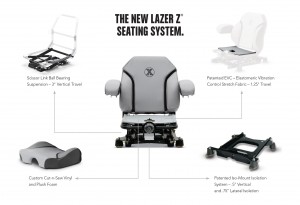New 60-inch Vantage S-Series is Exmark’s most productive propane-fueled stand-on riding mower
Exmark has expanded its industry-leading line of propane-fueled commercial mowers to include a 60-inch version of its Vantage S-Series Propane stand-on riding mower.
The machine’s innovative Kohler EFI propane powerplant delivers increased fuel economy and performance combined with reduced emissions, making it one of the most environmentally friendly commercial stand-on mowers available today.
Exmark Director of Marketing, Daryn Walters, said the 60-inch Vantage S-Series Propane is a machine customers have frequently been requesting.
“The reception to the 52-inch model we launched in 2015 was overwhelmingly positive,” Walters said. “That said, one thing we consistently heard from customers is of a need for a model with a larger cutting deck.
“The 60-inch Vantage S-Series Propane will give these customers added width of cut to maximize productivity, combined with the cost-saving advantage of our cutting-edge Kohler EFI propane powerplant. It’s a win-win situation. More productivity combined with lower cost equals greater profit. It’s as simple as that.”
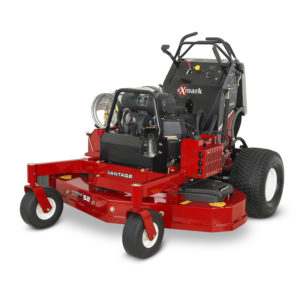
The state-of-the-art Kohler EFI-propane engine is the industry’s first OEM-engineered propane powerplant for commercial mowers.
The Vantage S-Series Propane is powered by a state-of-the-art Kohler Command Pro PCV740 V-Twin EFI propane engine. The professional-grade design uses automotive-style closed-loop electronic fuel injection to eliminate carburetor-related issues and automatically adjust to load, weather and altitude for better performance every day. The EFI design also offers car-like ease of starting – just turn the key and go. No choke, no priming and no fuel pressure adjustments needed.
The 60-inch UltraCut Series 4 side-discharge cutting deck features Exmark’s patented flow-control baffles to deliver the company’s signature quality of cut. Heavy-duty welded construction and high-strength 7-gauge spindle reinforcements deliver superior strength with increased long-term durability.
Maintenance-reducing features include sealed, no-maintenance spindles and Exmark’s patented spherical bearing design idler arm pivots.
“When combined with the incredibly reliable Kohler powerplant, the maintenance-reducing features help keep the Vantage S-Series Propane out making money more of the time,” Walters added.
The new 60-inch Vantage S-Series Propane mower joins Exmark’s existing EFI propane Lazer Z (zero-turn rider), Turf Tracer (walk-behind) and Vantage (stand-on) models.
Learn more at Exmark.com.

